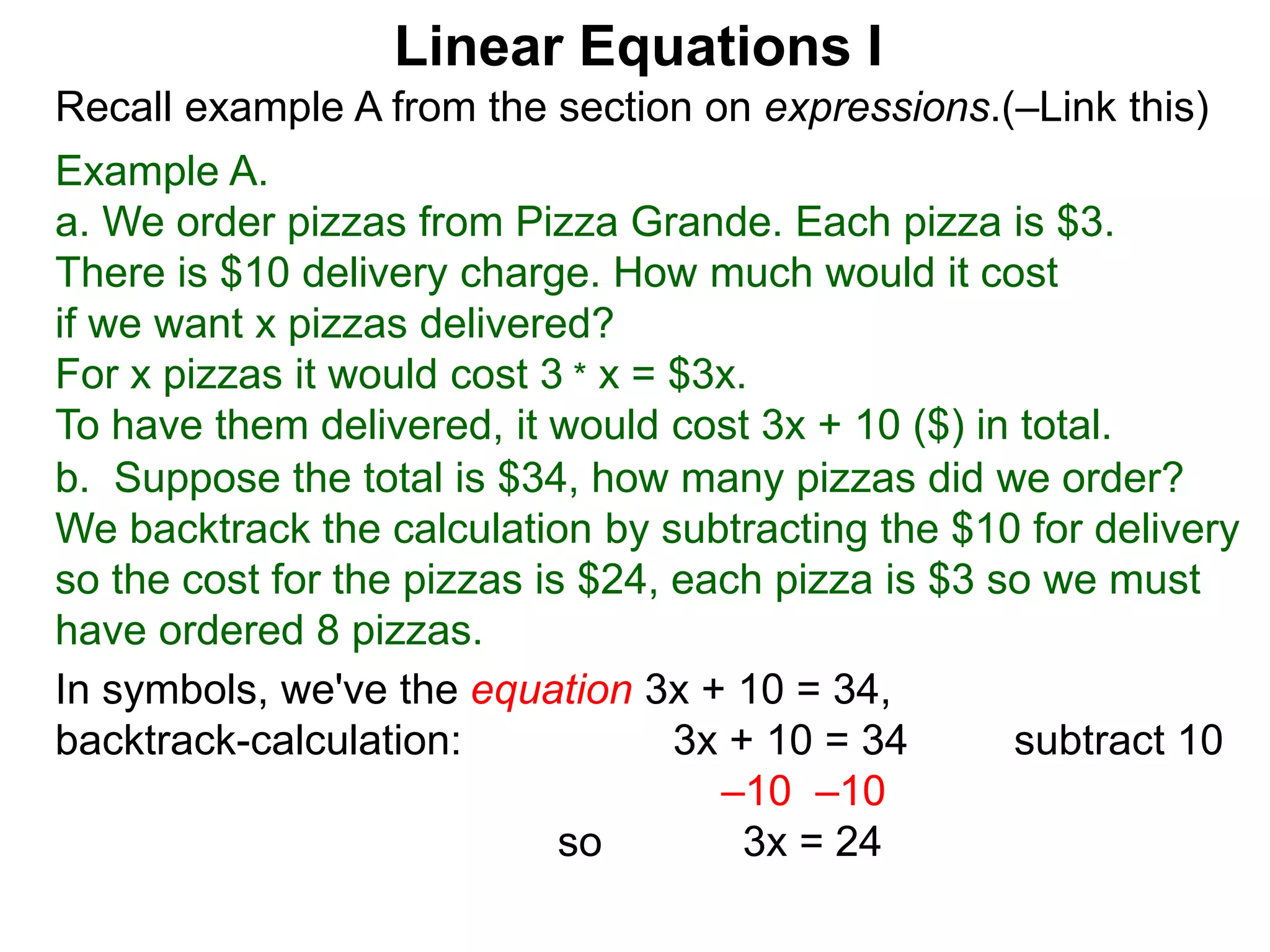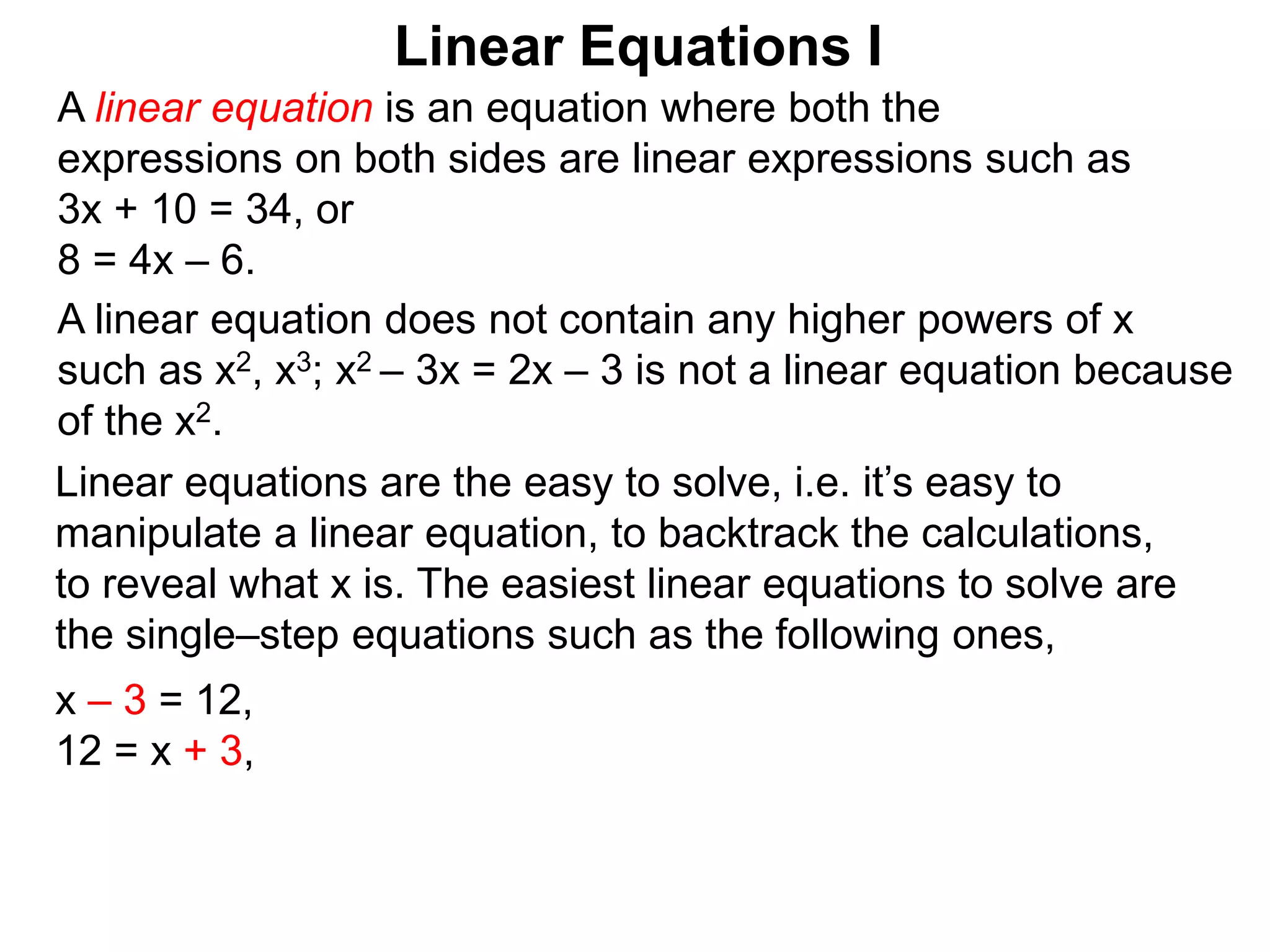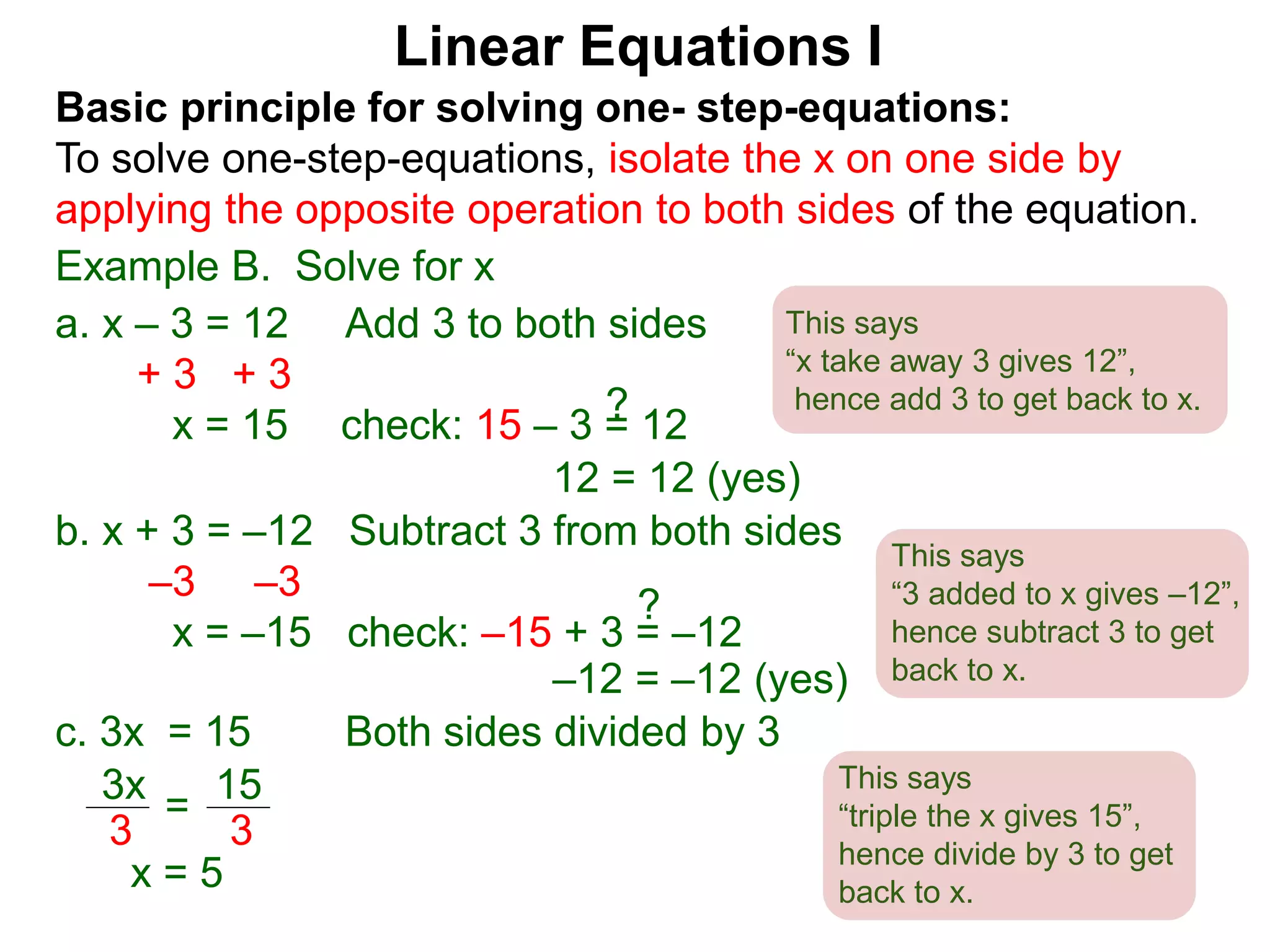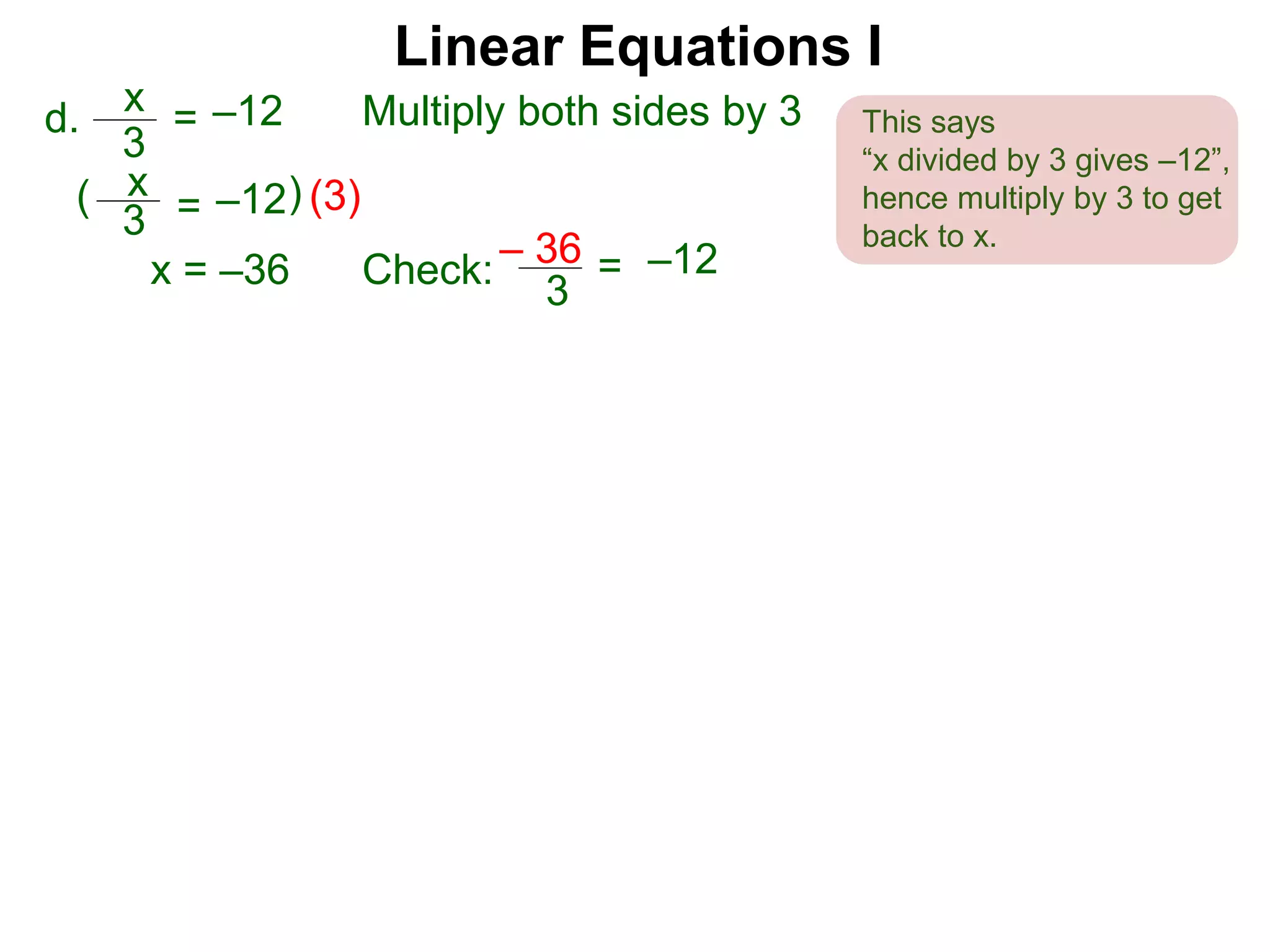The document provides examples of solving linear equations. It explains that a linear equation is one where the expressions on both sides are linear, such as 3x + 10 = 34. An example problem involves calculating the cost of x pizzas including delivery. By setting up and solving the equation 3x + 10 = 34, it is determined that x = 8 pizzas. The document discusses manipulating linear equations through steps like subtraction to solve for the variable.



















































































